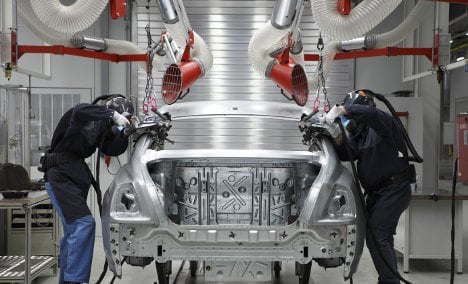German exports grew by 10 percent to 312,800 vehicles while production in general was also 10 percent stronger at 416,100 units, a VDA statement said.
The sector’s order backlog jumped by 27 percent to 435,300 automobiles, the highest level for a month of January since 2001, it added.
German brands profited in particular from the increase in domestic sales, and a breakdown of the data showed sales of diesel-powered German cars leapt by 40 percent to represent more than half of all the new German cars sold.
A global economic rebound has boosted demand for German autos in many emerging markets, especially China.
In 2009, the German market contracted by about one-quarter, following the expiration of subsidies for drivers that turned in old cars to buy new ones.
This year, VDA expects 3.1 million autos to be sold in Germany, which would mark a gain of about six percent and exceed the level recorded in 2008.
On Tuesday, French automakers reported an increase of 8.2 percent in January sales, while the Italian market saw a decline of 20.7 percent and Spain said its car sales had slumped by 23.5 percent.
VDA said that a key factor helping German autos was their falling levels of carbon dioxide emissions.
New German cars registered in the country emitted three percent less CO2 than a year earlier, compared with 0.6 percent less for imported vehicles, VDA said.
That contrasted with a widespread perception that German brands are often more powerful and therefore pollute more, it added.
In the past four years, German manufacturers have reduced CO2 emissions in cars sold domestically by 13 percent.
The European transport association T&E nonetheless ranks Germany 17th out of the European Union’s 27 members in terms of the overall level of auto emissions.
VDA president Matthias Wissmann stressed on Wednesday that Germany would meet an EU emissions limit of 120 grammes of CO2 per kilometre by 2015.
The average level at present is 152 grammes/kilometre.
AFP/ka



 Please whitelist us to continue reading.
Please whitelist us to continue reading.
Member comments